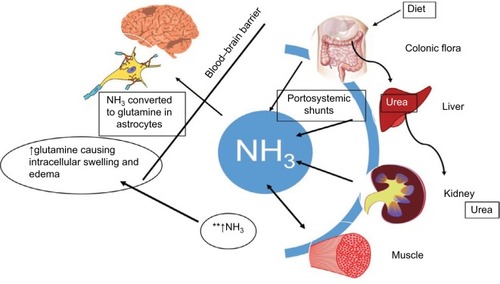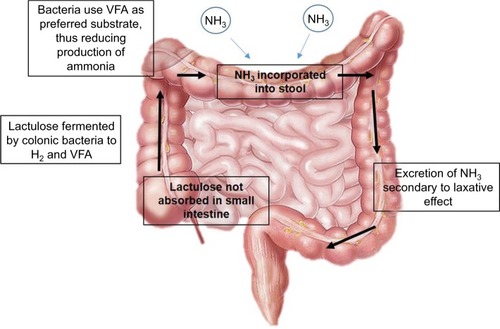Figures & data
Table 1 Precipitating factors to HE
Figure 1 Contributing factors toward pathophysiology of HE.
Abbreviation: HE, hepatic encephalopathy.

Table 2 West Haven Criteria for hepatic encephalopathy and symptoms
Table 3 Differential diagnosis of HE
Table 4 Psychometric tests used in the evaluation of MHE
Figure 2 Mechanism of action of nonabsorbable disaccharides.
Abbreviation: VFA, volatile fatty acids.

Table 5 Summary of other potential therapies for HE
